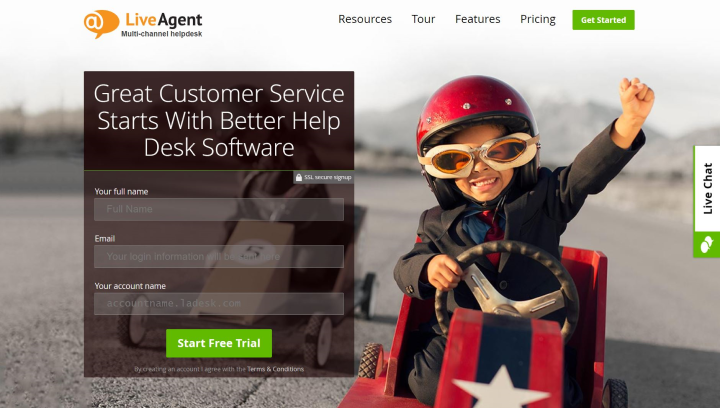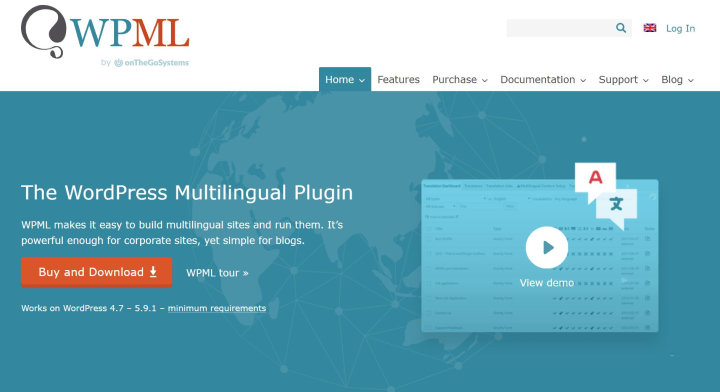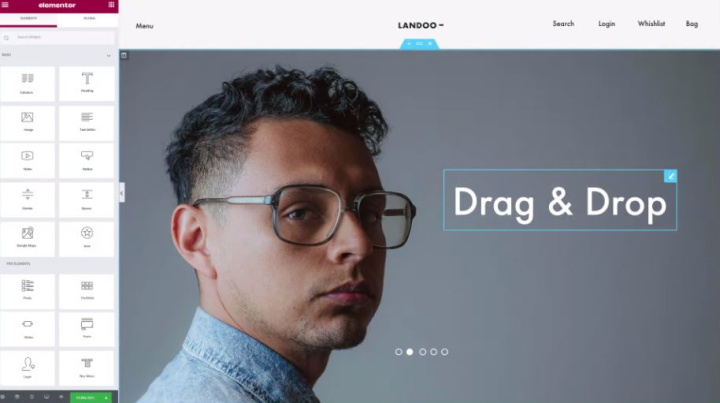More often than not, business growth will lead to expansion into new, foreign markets.
And, while English is the international language, complacently relying on it when attempting to lure a new customer base may prove costly.
Nearly 76% of internet users prefer to read product information in their native language. And that’s not just the case in which English is, at best, a secondary language.
In Sweden — which has one of the world’s best non-native English speakers – over 80% of online shoppers prefer to make a purchase in their own language
SaaS platforms have taken notice, as well:
Salesforce, Zendesk, Atlassian, and Dropbox now present their website in more than 20 languages.
Undoubtedly critical to business growth, localization projects require robust and sophisticated platforms and plugins. When coupled with Elementor, WPML can be relied on to translate comprehensive SaaS websites, at scale.
Here’s how Quality Unit did it.
Table of Contents
Introducing Quality Unit
Quality Unit is a Slovak-based SaaS company focusing on the development of B2B software and tools. It was founded in 2004 in the capital city, Bratislava, and has since globally expanded its operations.
The company manages and operates two major websites: LiveAgent and Post Affiliate Pro.
LiveAgent is a fully-featured Help Desk and live-chat software that helps you bring personalization to your customer interactions with an all-in-one help desk solution. LiveAgent boasts the fastest live chat widget on the market and is the most reviewed and #1 rated live chat software for SMBs in 2022. It offers a number of unique features, such as customer segmentation, automation, built-in CRM, and powerful analytics. Among LiveAgent’s notable clients you can find BMW, Yamaha, Huawei, and Oxford University.
Post Affiliate Pro is an affiliate marketing software that runs your entire affiliate program from top to bottom. It is intuitive, fast, effective, and infinitely expandable and scalable. The system will give you access to the Merchant panel and your affiliates to the affiliate panel to see their stats and manage their promotion materials.
The Early Years
Here’s what LiveAgent’s homepage looked like in 2015:

Launching both websites within a few weeks of each other in 2011, Quality Unit was using a platform called TYPO3. A free enterprise-class CMS based on PHP, TYPO3 was (and still is) a platform designed exclusively for programmers.
Subsequently, the task of updating and maintaining both websites was given to Martin Stepanek, a senior web developer at Quality Unit.

“TYPO3 was a platform for developers, chosen by developers,” Says Stepanek. Any kind of website update would require a lot of Stepanek’s time. When we wanted to release a new landing page, it was a difficult process. It would eat away at five hours of my schedule, and another five to eight hours of content editing.”
First Crack at a Drag and Drop Editor
Quality Unit’s sites remained TYP03-based for 8 years. Proving to be a competent (if limited) solution for the company, the code-heavy platform eventually ran out of favor.
“Back in the early days, the websites’ content scope was pretty narrow. As time went on, our marketing ambitions grew,” recounts Stepanek.
The company started devising far more landing pages that became more and more elaborate from a design standpoint. “We needed an editor that would not only be easier to create with, but also to maintain and update with.”
By 2019, it was clear that something new was very much in order.

“It was definitely time for a change,” remembers Daniel Pison, Quality Unit’s Head Of Marketing. “Even for a developer-heavy company, dealing with TYPO3 had become something of a nuisance. It wasn’t that we couldn’t use the platform; we simply wanted to allocate resources more efficiently.” Spearheaded by Stepanek, Quality Unit set out to find a new solution.
The company soon found out that a lot had changed in the years since launching its websites.
The WordPress ecosystem suddenly boasted a number of site builders and drag and drop solutions.
“It was definitely time for a change. It wasn’t that we couldn’t use the platform; we simply wanted to allocate resources more efficiently.”
Having spent the better part of a decade as a WordPress developer, Stepanek relied on his contemporaries’ advice in selecting a solution. Ultimately, he zeroed in on a (then) prominent WordPress page builder. “Many of my friends were relying on that platform so I just decided we can use it, as well,” says Stepanek.
The Next Frontier: Localization
“By 2019, both websites grew substantially,” states Pison. “Between Post Affiliate Pro and LiveAgent, Quality Unit had to oversee five domains.”
That was about to change, as both websites would need to penetrate new markets. “We expanded our activities in a number of key countries, none of which use English as their primary language,” recalls Stepanek. “Relying on a single, English-based website was no longer a viable option. “The need to localize had become a crucial one.”
For such an undertaking to be a successful one, the company we’d need to rely on a powerful translation plugin.
“We realized immediately that we were going to rely on WPML,” says Pison.
WordPress’ most popular plugin enabling web creators to run multilingual websites, WPML would allow Quality Unit to create the new, translated versions of both websites. However, it would need to be paired with a site-building platform that would be up for the task.

Developed by OnTheGoSystems, WPML is one of the most heavily used plugins for WordPress localization projects.
Examining whether the solution Quality Unit has settled on could be relied on as part of a localization project of this scope wasn’t top of mind for Stepanek and co. when selecting it as their site builder.
When we migrated to the first page builder platform, it really hadn’t occurred to us that we’d need a multilingual website,” recalls Andrej Csizmadia, Growth Marketer at Quality Unit. “Obviously, checking whether it would be capable of facilitating such a big project wasn’t top of mind.”

Turns out, it wasn’t.
We found that the WordPress website builder we had chosen was entirely incompatible for our use case. More specifically, it wouldn’t allow for serious integration with WPML. That was a deal breaker for us,” concludes Stepanek.
The Search for a WordPress Site Builder: Take Two
The decision would be a more consequential one, for a variety of reasons that extend beyond the need to localize.
Before we chose our first WordPress website builder, we didn’t conduct any real extensive market research. This time around, we were going to examine all available options,” states Stepanek.
In the few months following the migration to said platform, both websites had grown considerably. The number of landing pages and content that would need to be imparted on the new platform would far exceed those that were brought over from TYPO3.
Therefore, the platform would have to facilitate such a weighty migration. However, one issue loomed large over the impending research process: “We were about to go from five domains to 40,” says Stepanek.
Such a move would have significant ramifications: “We were going to be looking at constant version updates on multiple domains, on a very frequent basis.”
“We had to make sure that the platform we chose would be one that understood the issue of continuous updates. It was imperative for us that the solution would not just say it supported such issues.”
The search for the ideal solution began with that understanding dictating the process: “We had to make sure that the platform we chose would be one that understood the issue of continuous updates. It was imperative for us that the solution would not just say it supported such issues.”
The desired solution would have to prove this when it came to its own product. The latter would need to be the kind that rolls out new and improved features constantly (as opposed to when enough customers voice their disapproval of whatever it currently offers).
“We needed to see that they would introduce new tools (along with tweaks to existing ones) to preempt users’ gripes with ones that weren’t up to the task,” concludes Pison.
All In on Elementor
“We examined a number of competing products,” recalls Stepanek. “While they’re leading platforms for a reason, we sensed there was a clear leader to the pack.”
Finalizing their active vetting process, Stepanek and Pison began pitting the final candidates against each other to see which would prove most suitable:
“Once the research had been completed, we made a simple comparison spreadsheet showing the close circle of the potential solutions. Based on the previously stated reasons, Elementor looked like a solution with the least amount of hiccups.”
Of equal importance to the decision is Elementor’s compatibility with WPML. A plugin recommended by the former platform for quite a while, WPML works seamlessly with Elementor and is capable of translating all parts of a web page quickly and efficiently.
Pison and Stepanek were impressed with each platforms’ earnest effort to help web creators easily fuse both tools to maximum effect.
“Elementor and WPML seem to have gone to great lengths to educate users on ways in which to incorporate both plugins,” observes Stephnaek. “Translating Elementor websites using WPML is very straightforward.”
Since the lion’s share of the translation work would be done manually, this would prove to be pivotal.
“We feel that relying on automated translation, while easy, is not optimal”, explains Pison. “Beyond idioms and expressions that get lost in translation, we want the copy on our website to be just as eye-catching in, say, French, as it is in English on our original website.”
The manuals and help articles guide Quality Unit’s outsourced team of copywriters. The latter are entrusted with manually translating landing pages, blogs, and other content: “They perform the changes themselves on WPML. Once approved, they are immediately deployed on the given Elementor-backed domain,” adds Pison.
A Deeper Dive Into Life With Elementor
If migrating from TYP03 was a relatively simple process, moving to Elementor would prove a more complex undertaking: “Migrating from our initial page builder was time-consuming and quite challenging,” recounts Stepanek. “The process was a completely manual one. We read a ton of tutorials and made a number of customizations to configure the platform to fit our use case.”
“From a content management perspective, the everyday work with the Elementor editor has been an easy task to do.”
Migrating to Elementor also coincided with a major uptick in traffic to both websites’ various domains. This necessitated a certain level of modification. Additionally, the shift to Elementor would entail a specific infrastructure setup of servers.
However, the move quickly proved itself to be worthwhile: “From a content management perspective, the everyday work with the Elementor editor has been an easy task to do,” admits Stepanek.
Elementor’s intuitive UI was an immediate draw for Pison and his team:

“The block-oriented drag and drop feature is simple, yet powerful. It’s much easier to operate than our previous editor. It is mainly used to manage our custom-designed elements and blocks since Gutenberg is not as powerful and suitable,” says Pison.
Today, the task of creating and updating blogs on both websites (along with the aforementioned translation projects) can be delegated to marketing personnel who have little to no technical abilities.
“All blog and copy-related tasks can be dealt with by non-technical marketers, thanks to Elementor. We prefer developers deal with creating new landing pages since there is the occasional need to tinker with CSS.
Results
More than any other metric, the websites’ performance has been positively affected since moving to Elementor:
“While we can’t contribute it solely to migrating to your platform, we don’t think it’s a coincidence that we’ve seen a 5 second(!!) improvement in page load time since the days of TYPO3’,” says Stepanek.
“With Elementor, I don’t need to care about anything because elements are prepared. It takes me a fraction of the time it did in the past.”
While not as quantifiable (at least not to the granular level of said page speed), Quality Unit’s workflow is far more efficient with Elementor:
“When we wanted to release new landing pages with TYPO3, it was a difficult process. As a developer, it would take like, five hours of my job and require another five to eight hours of content editing,” recalls Stepanek.
But today?
“With Elementor, I don’t need to care about anything because elements are prepared. It takes me a fraction of the time it did in the past.”
The difference between the old versions of LiveAgent and Post Affiliate Pro speaks for itself.
This is the old LiveAgent website:
And this is the new one:
The migration to Elementor was the culmination of a year-long process; one that saw Quality Unit transition out of an antiquated working model to a seamless, mostly code-free approach:
“What’s most amazing to me is that we can have our web-development department deal exclusively with new features. All matters of content can be dealt with by teammates who wouldn’t know the first thing about programming. That’s what makes solutions like Elementor great,” concludes Pison.

